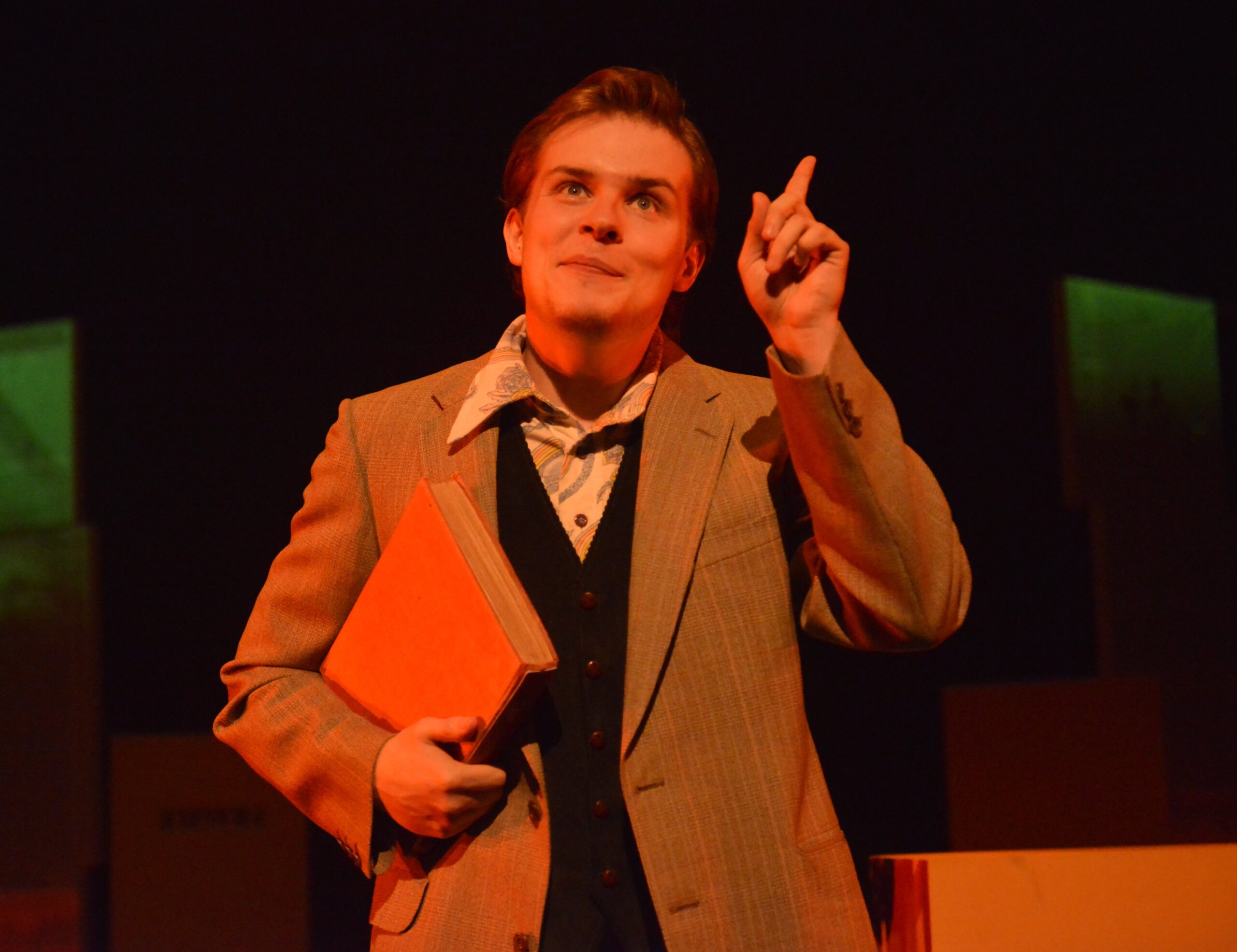
A scene from Hansel and Gretel at Birmingham Hippodrome
Photo: Kate Green
Taking bold steps
Few arts venues have programmed main stage shows starring performers with learning disabilities, but new diversity requirements for England’s NPOs could change that, says Gus Garside.
The page on Birmingham Hippodrome’s website for a recent production of Hansel and Gretel highlighted some ‘important stuff’. This included the line printed in bold: “Open Theatre Company and BecauseWeCanCanCan work closely with Birmingham Hippodrome to support emerging performers with learning disabilities, some of whom appear in this production.”
It shouldn’t take carrots and sticks to enliven the arts world but it helps
This could have been read as an invitation to experience something bold and hugely entertaining, or it could have been interpreted as a warning, which would have been a shame. Mounting this show was another step in the history of a venue that has, for a long time now, made room for new and innovative ways of working with diverse performers and audiences, including those with learning disabilities.
Addressing diversity
In 2008 the DCMS published Supporting Excellence in the Arts. Its author Sir Brian McMaster wrote: “The diverse nature of 21st century Britain is the perfect catalyst for ever greater innovation in culture and I would like to see diversity put at the heart of everything cultural. We live in one of the most diverse societies the world has ever seen, yet this is not reflected in the culture we produce, or in who is producing it.”
Three years later Arts Council England (ACE) launched Creative Case for Diversity echoing these words. It was a call to move away from the tick-box approach to diversity and to create an arts scene that truly reflected the world in which we live. It was an idea that no one could disagree with, but while it existed simply as an idea, little would change.
However, the current round of National Portfolio Organisations (NPOs) 2018–22 are now more than ever required to demonstrate that they are addressing diversity. NPOs receiving over £250,000 per year will have to demonstrate ‘strong’ Creative Case ratings by March 2022 (when NPO agreements are next renewed).
The ACE website states: “We believe that embracing the Creative Case helps organisations not only enrich their work, but also address other challenges and opportunities in audience development, public engagement, workforce and leadership. Our funded organisations are expected to show how they contribute to the Creative Case for Diversity through the work they produce and present.”
It shouldn’t take carrots and sticks to enliven the arts world but it helps. This could provide the opportunities that the vibrant learning disability arts sector has been waiting for.
Limited progress
Recent years have seen some wonderful initiatives for inclusive practice embracing and recognising disabled artists and performers, such as Unlimited and Ramps on the Moon and the creation of Agent for Change posts in several major venues. However, the professional opportunities offered to learning disabled artists and performers remain at best minimal. Most work created by learning disabled people across the sector is still co-created with non-learning disabled people.
Unlimited has perhaps not yet taken on board the specific challenges that the learning disability arts sector faces. And while Ramps on the Moon has made some fantastic productions, and learning disabled actors have been auditioned for them, none have made it to the stage.
This could be because the nature of the shows so far has been based, on the whole, in the standard literary tradition of most UK theatre and maybe some thought needs to be given to how and why work is selected. Or, as some have suggested, maybe there needs to be a parallel programme to Ramps on the Moon that embraces work that is new, different and transgressive. The next four years may see a tipping point for the sector.
There are many challenges ahead to ensure that the opportunities turn into realities. Programmers and curators need to be more adventurous in surveying what is out there to programme. The auditioning process needs to be evaluated and changes made to make it accessible. Some serious thought also needs to be given to audience development and marketing.
The wider arts world will need help with this, and the welcome increase in learning disability arts NPOs (Access All Areas, Venture Arts, Open Theatre Company and Corali Dance Company) means there are organisations to whom they can turn for training and advice.
Over the past few years, we have seen the learning disability arts sector becoming more aspirational. Mind the Gap’s ‘Mia’ and Access All Areas ‘Misfit Analysis’ both picked up superb national reviews. Selections from the last Oska Bright International Film Festival led by Carousel have been included in this year’s Brighton Festival. Action Space artist Thompson Hall was commissioned for the 2016 House Festival alongside Turner Prize-winning artist Gillian Wearing.
Bolder programming
But more importantly, we need to see the wider arts world taking responsibility and being bolder in its programming of the work of learning disabled artists and performers presenting new and exciting stuff that challenges conventions without lowering artistic standards.
The production of Hansel and Gretel is a shining example of what can be achieved attracting above average audiences to family shows at the theatre. To quote The Stage: “It’s brilliant to see an excellent company take up space at a major commercial theatre.”
Gus Garside is National Coordinator of Creative Minds.
creativemindsproject.org.uk
Join the Discussion
You must be logged in to post a comment.